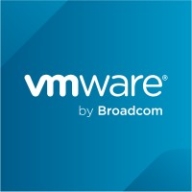

Splunk AppDynamics and vRealize Network Insight compete in the application and network monitoring category. Splunk AppDynamics appears to have an edge in application performance troubleshooting, thanks to its dynamic baselining and real-time diagnostic data capabilities. vRealize Network Insight stands out for network traffic analysis with its robust visualizations and user-friendly interface.
Features: Splunk AppDynamics provides features like dynamic baselining, detailed analytics, and end-to-end application monitoring, simplifying performance bottleneck identification. It offers real-time diagnostic data via its SaaS model. vRealize Network Insight excels at visualizing network flows and widely supports network protocol analysis, streamlining network security management for users through its intuitive design.
Room for Improvement: Splunk AppDynamics users desire better integration with performance testing tools and improved network monitoring. Its complex licensing structure is another area for simplification. vRealize Network Insight can enhance third-party vendor integrations and improve reporting and network flow tracking capabilities. Greater compatibility with various infrastructure types is also suggested.
Ease of Deployment and Customer Service: Splunk AppDynamics supports versatile deployments in public clouds, hybrid clouds, and on-premises environments with a flexible but complicated pricing model. Its customer service is generally responsive, though resolution speed can vary. vRealize Network Insight enjoys a straightforward on-premises deployment and is praised for prompt and competent support.
Pricing and ROI: Splunk AppDynamics is a premium-priced tool, but users find its monitoring features justify the cost, especially with volume discounts. It is valued for reducing MTTR. vRealize Network Insight's initial expense is noted, yet its value in simplifying network management is emphasized. Both solutions offer strong ROI due to time savings and enhanced performance insights.
According to errors, exceptions, and code-level details related to their application performance on a daily basis, the application development team tries to help with Splunk AppDynamics to reduce errors and exceptions, which helps the end users get application availability and feel more confident.
To understand the magnitude of it, when the company asked to replace Splunk AppDynamics with another tool, I indicated that for the proposed tool, we would need five people to do the analysis that Splunk AppDynamics enables me to do.
It's very hard to find ROI because we are currently focused only on the on-premises applications.
AppDynamics is much more helpful.
We got a contact, an account manager, to work directly with for technical support.
They help us resolve any issues raised by our team relating to operations, application instrumentation, or any other issues.
It's difficult to find necessary documentation, open tickets, and get support.
We are paying too much for technical support from VMware.
We have reached maximum capacity in our tier, and extending capacity has not been cost-effective from Splunk's perspective.
I would rate the scalability of Splunk AppDynamics as a nine out of ten.
I assess how Splunk AppDynamics scales with the growing needs of my organization as good, since we are growing and adding more servers.
It is necessary to conduct appropriate testing before deploying them in production to prevent potential outages.
There are no issues or bugs with the 20.4 version; it is very stable with no functionality or operational issues.
I can rate it nine out of ten.
We are managing that one but usually we have an API connector between our firewall vendor and our VMware NSX.
Splunk AppDynamics does not support the complete MELT framework, which includes metrics, events, logging, and tracing for the entire stack.
If AppDynamics could develop a means to monitor without an agent, it could significantly improve application performance and reduce potential problems.
A good integration with Splunk would be very interesting, as Splunk is a good product for logs, and that part is currently missing in Splunk AppDynamics.
Broadcom should improve by going back to what was working before, offering the suite of tools that clients actually use, and allowing clients to decide the best options for them.
We completed a three-year deal for Splunk and for AppDynamics, which costs millions of dollars.
Customers have to pay a premium price, however, they receive considerable value from the product.
All these solutions at the moment are cheap, but it is like paying for insurance; you pay insurance to avoid major damage.
Broadcom is known for increasing product prices, making them expensive compared to what people used to pay.
We have multiple tools, but end users prefer to use Splunk AppDynamics because their portal navigation is very simple and clear.
The real user monitoring and digital experience monitoring effectively track actual user experience with the applications, including page loading, interaction time for both desktop and mobile applications.
The feature that I appreciate in AppDynamics Browser Real-User Monitoring is the intuitive and user-friendly dynamic mapping it creates for workflows.
One of the biggest problems with VMware NSX is logging, and vRealize Network Insight helps by providing comprehensive logs.
| Product | Market Share (%) |
|---|---|
| Splunk AppDynamics | 2.8% |
| vRealize Network Insight | 0.5% |
| Other | 96.7% |


| Company Size | Count |
|---|---|
| Small Business | 55 |
| Midsize Enterprise | 36 |
| Large Enterprise | 188 |
| Company Size | Count |
|---|---|
| Small Business | 11 |
| Midsize Enterprise | 9 |
| Large Enterprise | 41 |
Splunk AppDynamics enhances application performance monitoring with advanced diagnostics and real-time insights, offering seamless end-to-end transaction tracking and infrastructure visibility.
AppDynamics provides critical tools for businesses to analyze application behavior and performance. Through innovative features like transaction snapshot analysis and adaptable dashboards, users can quickly identify and address issues, ensuring high levels of system uptime and efficiency. It is designed to support complex environments including Kubernetes and AWS, enhancing user experience by detecting performance issues early. Despite needing improvements in network monitoring and integration, it remains a robust option for tracking application health.
What are the key features of AppDynamics?In industries like financial services and e-commerce, AppDynamics facilitates performance tracking across distributed systems, optimizing infrastructure to meet consumer demands. It excels in environments needing precise transaction monitoring and is pivotal in delivering high value and satisfaction.
VMware vRealize Network Insight delivers intelligent operations for software-defined networking and security. It helps customers build an optimized, highly-available and secure network infrastructure across multi-cloud environments. It accelerates micro-segmentation planning and deployment, enables visibility across virtual and physical networks and provides operational views to manage and scale VMware NSX deployments.
We monitor all IT Infrastructure Monitoring reviews to prevent fraudulent reviews and keep review quality high. We do not post reviews by company employees or direct competitors. We validate each review for authenticity via cross-reference with LinkedIn, and personal follow-up with the reviewer when necessary.